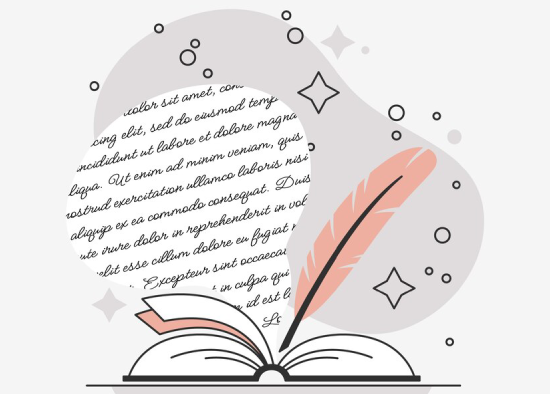How to Cite Poetry: MLA and APA Formatting Citations
This helps strengthen your argument and provides a wider context for the topic you are discussing. In addition, writing is also important for developing critical thinking skills. By writing, one can question existing ideas and make logical arguments. It also allows one to evaluate information and conclude what is true or false. Thus, they can learn how to think critically about certain topics. The ability to write well is also very important for success in academia. Writing a good essay will help a person get high marks on his academic assignments. In addition, this ability will also help them when applying for jobs in the future. With this ability, they can easily translate their ideas into effective and persuasive writing.

When to Use Poetry Quotes
Poetry quotes are best used when you want to emphasize or strengthen a certain point in your essay. It can also be used to highlight a particular theme, style, or structure of a poem. Poetry quotes can also be used to describe feelings and emotions that cannot be easily expressed in words. If you use poetry quotes in your work, be sure to cite them properly. This means making sure that you include the author’s name and the title of the poem, as well as relevant line numbers. If you don’t, it will be considered as plagiarism. Also, if you use a quote from another source, be sure to provide readers with the original source. This is important so that readers can examine the information presented and verify its authenticity.
Need help WRITING RESUMES?
Just submit your requirements and choose a resume writer. That’s all we need to write a winning resume for you.
Quoting poetry excerpts in MLA style
MLA provides rules for writing, quoting, and layout formatting. This includes how you should use punctuation, italicized words, and how you should cite other sources.
Short Quotes: For example, Robert Frost wrote, “The woods are lovely, dark and deep / But I have promises to keep / And miles to go before I sleep” (Frost 1-3). Long Quotes: For example, Robert Frost wrote: “The woods are lovely, dark and deep, But I have promises to keep, And miles to go before I sleep, And miles to go before I sleep” (Frost 1-4).
Quoting long quotes
- If you do choose long quotes, some of the rules are exactly the opposite of how you would write small quotes – and you have to be really careful not to mix them up.
- Start your quote on a new line, indented half an inch from the left margin.
- Enter in block quotes. Include line breaks in quotes like the original.
- Save the original formatting and punctuation as part of the author style.
- Use double space in quotations.
- No need for quotes or slashes, just skip it.
Quoting the title of the poem
Example: John Donne, in “The Flea,” wrote: “Mark but this flea, and mark in this / How little that which thou deniest me is.” 1. If you are citing a poem found in a book, the parenthetical citation must include the poet’s name, the title of the poem, and the page number where the poem begins. For example: (Shakespeare, “Sonnet 18,” p. 34). 2. If you are citing a poem that is in a magazine or journal, the parenthetical citation must include the name of the poet, the title of the poem, and the edition number in which the poem was published. For example: (Shakespeare, “Sonnet 18,” April 2020 issue). 3. If you are citing a poem found on a website or blog, the parenthetical citation must include the poet’s name, the title of the poem, and the URL where the poem was published.
How to cite a poem in APA style?

- For poetry excerpts of up to 40 words (short quotes), using quotation marks is mandatory.
- You don’t have to start a short bid from a new line.
- Line breaks in short quotes must be marked with a slash.
- Block quotes must be used for quotes longer than 40 words (long quotes).
- You must start the block quote from a new line.
- Don’t use quotation marks for block quotes
- Block quotes must be indented 1.3 cm from the left margin, and in double space formatting.
Tips and tricks on how to quote poetry
- Read the entire poem to make sure you understand the meaning of the quote and the author’s message correctly. Then, decide which lines to use as a quote for your work.
- Write a few words about: Why did you choose the lines from your poem, their message, and what is their connection to your essay topic.
- Don’t overuse quotes in your work. You can also paraphrase, rather than quote, to share another view. Besides, this is your own work and you shouldn’t rely on other people’s words all the time.
- There’s no need to quote the entire poem if you need a few lines at the beginning and a few at the end. Remove any center lines you don’t need (use ellipses to indicate that you’re going to skip words), or make two quotes that connect your text between them.
- Use embedded quotes. This is a quote that is implemented as part of your sentence. You can put it at the beginning, in the middle, or at the end of your sentence. The idea is to make it an organic part of your text. Example: As well as Robert Frost, at first “I stick with those who support the fire”.
- When citing a particular source (periodical or website perhaps), check for specifics on how to cite it in MLA or some other format – as there are some concerns we don’t have time to cover.
- Along with a final review of your essay, proofread your citations for both: appropriate use, and correct format.
